#1920s Scotland
Text



Black and Coral Sequinned Silk Dress, 1927, Scottish.
National Museums Scotland.
#20th century#silk#crêpe de Chine#extant garments#womenswear#sequins#dress#black#pink#coral#Scotland#national museums scotland#1920s#1927#1920s Scotland#Scottish#1920s britain#british#Britain#pale pink
4 notes
·
View notes
Text
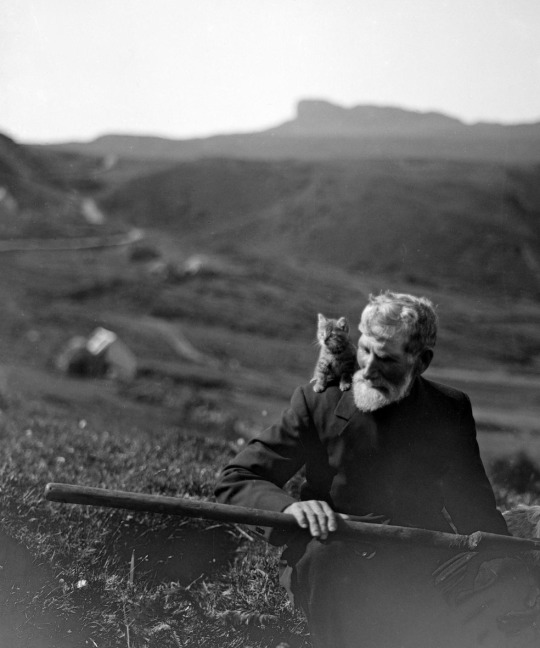
Beautiful scene in Scotland. Ca. 1920s. Source.
2K notes
·
View notes
Text

E. O. Hoppé. Glasgow, Lanarkshire, Scotland. 1926
#e.o. hoppé#e.o. hoppe#black and white#vintage#photography#glasgow#scotland#street photography#art#history#black and white photography#vintage photography#1920s
1K notes
·
View notes
Text
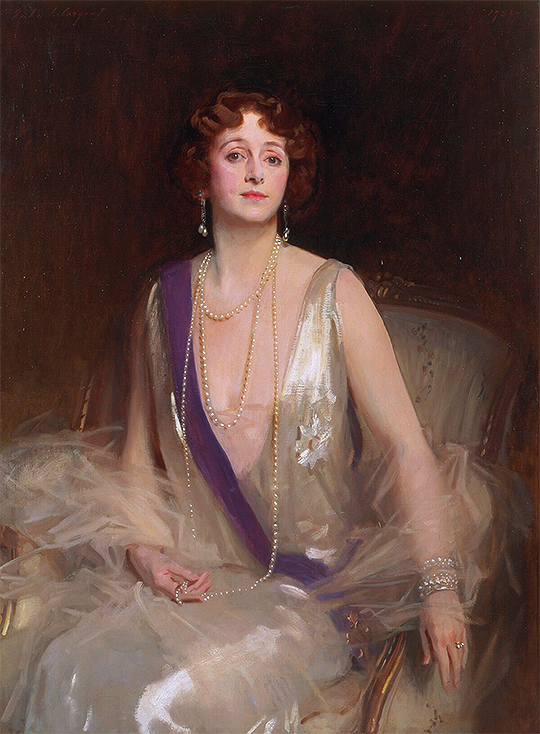
John Singer Sargent, Grace Elvina, Marchioness Curzon of Kedleston (1925). Sargent's last completed painting.
#john singer sargent#art#1925#1920s#grace curzon#🕰️#this is who chips is currently (100 years ago) hanging out in scotland with
2 notes
·
View notes
Photo

A view of Edinburgh - by Alfred Buckham, 1920 #edinburgh #scotland #uk #photo #photos #photography #aerial #1920s #cityscape #city #cities https://www.instagram.com/p/Chexd2Xshyg/?igshid=NGJjMDIxMWI=
12 notes
·
View notes
Photo





Beautiful British Travel Posters by Henry George Gawthorn
2 notes
·
View notes
Text

Sam and Cat from Lip Service (2011-12) in 1920's style clothing.
#this is edited because my current sketch pad has such bad quality paper#the show does NOT take place in the 1920s#it takes place in 2011/12 in Scotland#sam x cat#lip service#lesbians#tv shows#fan art#scottish tv#I think they actually ended up being my favorite couple in spite of everything???#no spoilers but there is some DRAMA if you know YOU KNOW!!!#Sam and Tess were my favorite characters but Tess never seemed to get anyone to stay with her :(#and half of season 2 for Sam was very rough... I did not like that#I was thinking of drawing Tess too but like AFTER I finish my paper#this was drawn a few days ago I just had to post it#I'm a sucker for butchxfemme yes ma'am#and they were the traditional butchxfemme couple for this show#I think I did 1920s clothes because my brain is half stuck in the 1920s because of the class I'm in rn#1920's fashion#lesbian characters#my drawings#pen and ink#colored pencil#both my paper for class and this show concern lesbians so close enough I suppose#enjoy maybe?#VBL is my new penname that I'm going to use for my writing project (the Sapphic Victorians one which also has new title)
5 notes
·
View notes
Text

Allegory of Scotland, Stewart Carmichael, 1925
#allegory of scotland#stewart carmichael#carmichael#painting#art#1925#1920s#1900s#20th century#allegory
1 note
·
View note
Text

As you would expect February 29th is a bit bereft of anniversaries, but did you know..........
Anyone born on this day is said to be unlucky in Scottish culture, and referred to as “Leaplings.” True, they don’t get to celebrate many birthdays, but to make things worse, Scottish tradition adds on another layer by saying that leaplings are doomed to a lifetime of “untold suffering.” They also consider leap years as doomed for farmers, as the saying goes: “Leap year was never a good sheep year.”
Ithink we all know that it is the day of the year a lady can traditionally propose toher man, but in Scotland women intending to propose are advised to wear a red petticoat visible to their love – perhaps to give them fair warning! ;) Tradition also stated that any man who refused a Leap Day proposal should be issued with a fine, which could range from money to silk gowns.
If you are trying to work out the math on what you're exact age would be if you were born on February 29th, then you are in luck.
1920: 104 years old or 26.
1924: 100 years old or 25.
1928: 96 years old or 24.
1932: 92 years old or 23.
1936: 88 years old or 22.
1940: 84 years old or 21.
1944: 80 years old or 20.
1948: 76 years old or 19.
1952: 72 years old or 18.
1956: 68 years old or 17.
1960: 64 years old or 16.
1964: 60 years old or 15.
1968: 56 years old or 14.
1972: 52 years old or 13.
1976: 48 years old or 12.
1980: 44 years old or 11.
1984: 40 years old or 10.
1988: 36 years old or 9.
1992: 32 years old or 8.
1996: 28 years old or 7.
2000: 24 years old or 6.
2004: 20 years old or 5.
2008: 16 years old or 4.
2012: 12 years old or 3.
2016: 8 years old or 2.
2020: 4 years old or 1.
The next leap year will take place in 2028.
1K notes
·
View notes
Text
The Evil Little Hairy Cave People of Europe in Pulp Fiction

From the 1900s to the 1940s, there was a trendy theme in occult and horror stories that the explanation for widespread European legends of fairies, brownies, pixies, leprechauns and other malicious little people, was that they were a hereditary racial memory of the extremely small non-human, hairy stone age original inhabitants of Europe, who still survive well into modern times in caves and barrows below the earth. Envious of being displaced on the surface, these weird creatures, adapted to the darkness of living underground and unable to withstand the sun, still mean mischief and occasionally go out at night to capture someone.... usually an attractive woman....to take to their dark caves for human sacrifice.
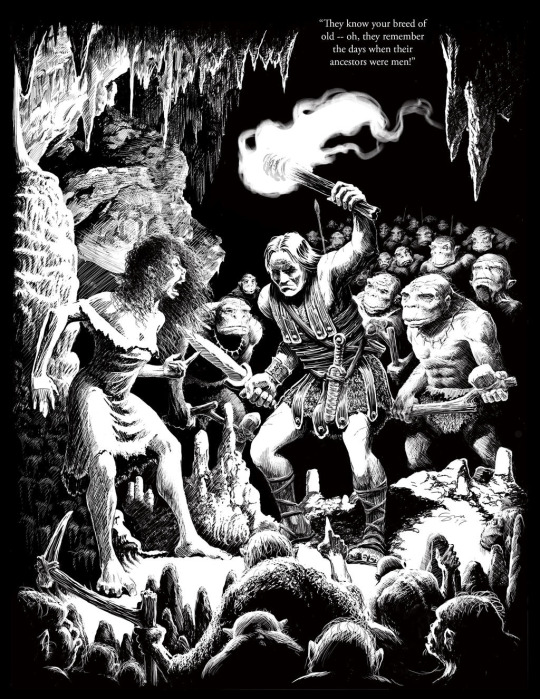
Displaced by the arrival of Indo-European language speakers at the dawn of the Bronze Age, these original, not quite human stone age people of Europe were driven deep underground into caves and barrows below the earth, where they went mad, adapted to the darkness and acquired a fear of daylight, became extremely inbred, in some cases acquired widespread albinism. It is these strange little people who gave the descendants of Europeans a haunting racial dread of places below the earth like mines and caves, and it also is these strange, hairy troglodytes who originally built the uncanny and mysterious menhir, fairy rings, and stone age structures of England, Scotland, and Ireland that predate the coming of the Celts and Romans.
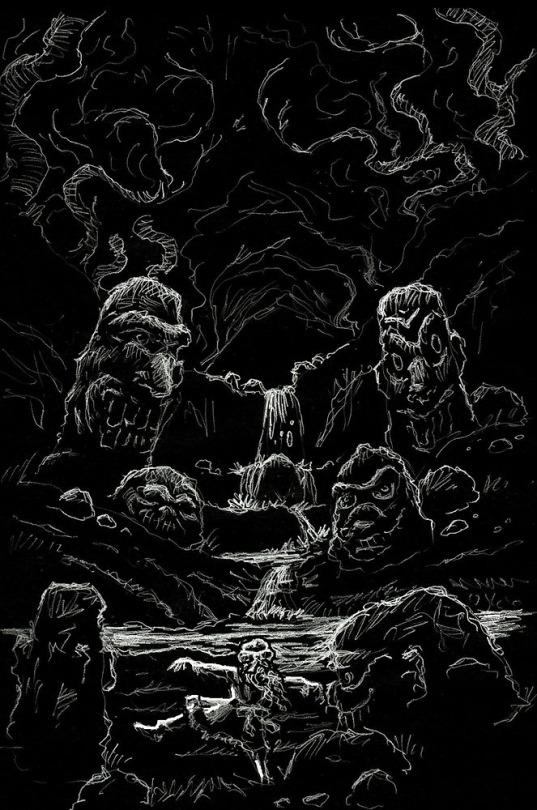
In some cases, these evil troglodytes are usually identified with the mysterious Picts, the pre-Celtic stone age inhabitants of the British Isles. In some cases, they are identified with the Basque people of Spain, best known as the inventors of Jai Alai, and the oldest people in Europe who speak a unique language unrelated to any in the world.
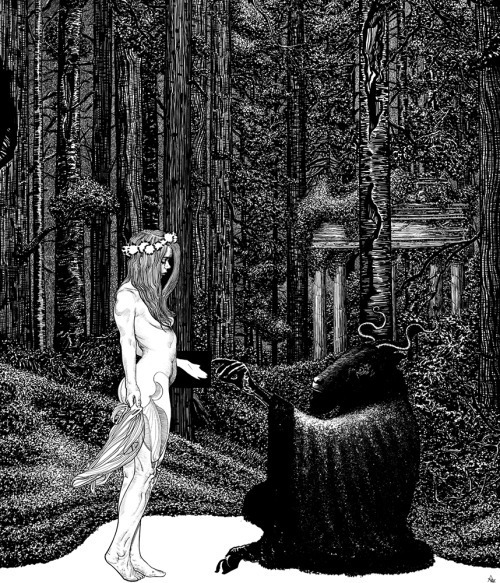
The original codifier of this trend was Arthur Machen, a horror writer who is less remembered than his contemporary, Henry James, but who may be the best horror writer in the generations between Poe on the one end and Lovecraft/CL Moore/Clark Ashton Smith on the other. His story, "the White People" from 1904 (a reference to their strange cave albinism) was a twisted Alice in Wonderland with a girl who is irresistibly attracted to dark pre-Roman stone age ruins and who is eventually pulled underground.
In addition to being a great horror writer, Arthur Machen was a member of the Hermetic Society of the Golden Dawn, an occult organization, and was often seen at the Isis-Urania Temple in London. Many of his works have secretive occult knowledge.
H.P. Lovecraft in particular always pointed out Arthur Machen as his single biggest inspiration, though he combined Machen's dread and occultism with Abraham Merritt's sense of fear of the cosmic unknown, seen in "Dwellers in the Mirage" and "People of the Pit."

Another and scarier example of this trend would be "No Man's Land," a story by John Buchan, a Scotsman fascinated by paganism and horror, who often wrote stories of horrific discoveries and evil rites on the Scottish moors. He is often reduced to being described as a "Scottish Ghost Story" writer, a painfully reductivist description as in his career, Buchan wrote a lot of thrillers, detective, and adventure stories as well. In later life, he was appointed Governor General of Canada, meaning he may be the first head of state to be a horror writer.
It was Buchan who first identified the cave creatures with the Picts, something that another Weird Tales writer decades later, Robert E. Howard, would roll with in the 1920s.

Howard is a very identifiable kind of modern person you often see on the internet: a guy who talks tough, but who was terrified to leave his small town. He created manly man, tough guy heroes like Conan the Barbarian, Kull, and El Borak, but he himself never left his mother's house. It's no wonder he got along well with his fellow Weird Tales writer and weird shut in, HP Lovecraft. With 1920s Weird Tales writers, despite your admiration for their incredible talent, you also can't help but laugh at them a little, a feeling you also apply to a lot of Victorians, who achieved incredible things, but who are often closet cases and cranks who died virgins ("Chinese" Gordon comes to mind, as does Immelmann).
With Howard, his obsession with the Picts and the stone age cave dwelling people of Europe started with an unpublished manuscript where at a dinner party, a man gets knocked out and regresses to his past life in the Bronze Age, where he remembers the earliest contact between modern humans and the original inhabitants of the British Isles, the evil darkskinned Picts. This is a mix of both the "little cave people" story and another cliche at the time, "the stone age past life regression novel," another turn of the century cliche.
Still with the Picts on his mind, Howard would later create Bran Mak Morn, a Pict chieftain, who predated Kull and Conan as his Celtic caveman muscle hero. Howard was of Irish descent and proudly anti-Colonial and anti-British, with his Roman Empire and Civilized Kingdoms as a stand in for the British and other Empires, which he viewed as rapacious and humbug, a view shared by his greatest inspiration, Talbot Mundy. His "Worms of the Earth" gets to the heart of why these little cave people scare us so much: they remind us that we live on land that is impossibly ancient and we don't fully understand at all.
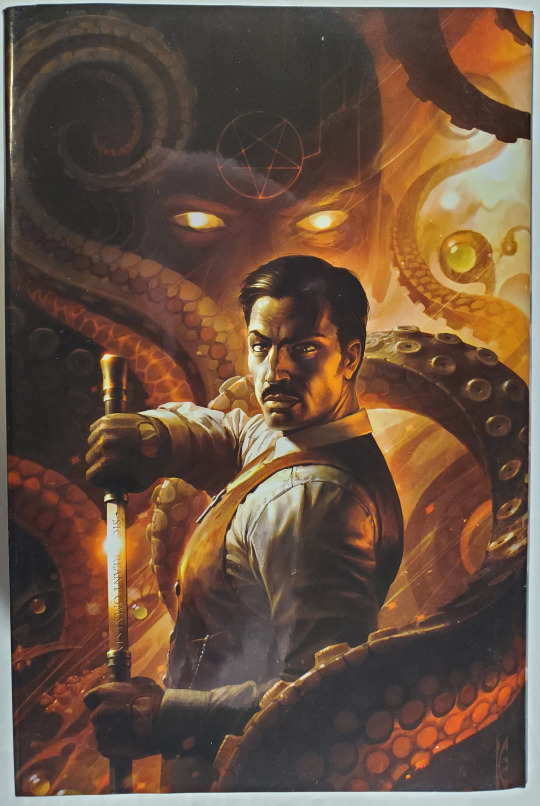
It was another Weird Tales Writer a decade later who wrote one of the last stories about the little hairy cave people of Europe, though, Manly Wade Wellman in 1942. Wellman was mainly known for creating the blond beefcake caveman hero Hok the Mighty set in stone age times, and for his supernatural ghost stories of Silver John the Balladeer set in modern, ghostly Appalachia (like many ex-Weird Tales writers, he made a turn to being a regional author in his later career, in the same way Hugh B. Cave became a Caribbean writer), but Wellman also had a regular character known as John Thunstone, a muscular and wealthy playboy known for his moustache who used his great wealth to investigate the supernatural and the occult. Thunstone had a silver sword made by St. Dunstan, patron of Silversmiths, well known for his confrontations with the Devil.
Most John Thunstone stories featured familiar stories, like a demon possessed seance and so on, but one in particular featured a unique enemy, the Shonokins.
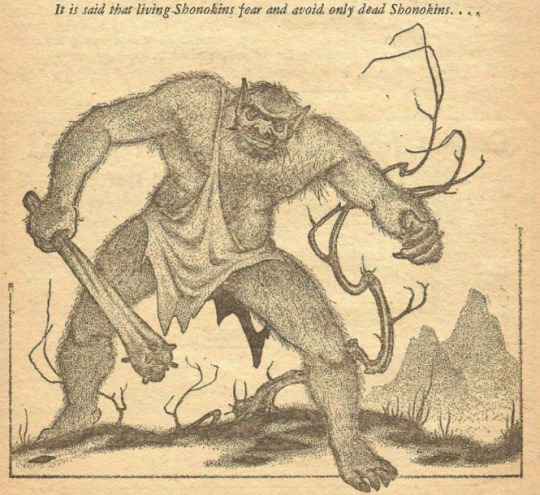
The Shonokins were the original rulers of North America, descendants of Neanderthal man displaced by American Indians. This fear that the land we live is ancient and unknowable and we just arrived on it and don't know any of its secrets is common to settler societies, who often hold the landscape with dread, as in Patricia Wrightson's fantasies of the Australian Outback. It was easy enough to transport the hairy cave people from the Scottish Moors to North America. I suspect that's what they are, a personification of a fear shared in the middle class, that in the back of their minds, that everything they have supposedly earned is merely an accident of history, built by rapacity and the crimes of history, and that someday a bill will come due.
A text page in the May 1942 issue of Weird Tales gives strange additional information on the Shonokins not found elsewhere:
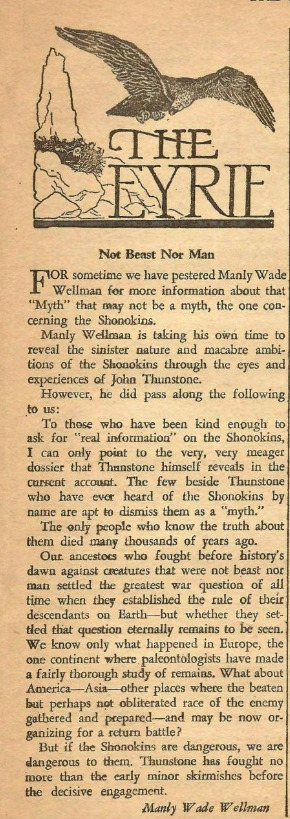
Since then, there have been too many examples of evil cave people who predate Europeans. Philip Jose Farmer's "The All White Elf" features the last survivor of a pre-European people who live in caves. A lot of other fiction of course has featured the Picts, but according to our modern scientific understanding, which describes them as much, much less exotically, as a blue tattooed people not too different and practically indistinguishable from the Celtic tribes that surrounded them, and which they eventually blended into.
417 notes
·
View notes
Text
The Real McCoy
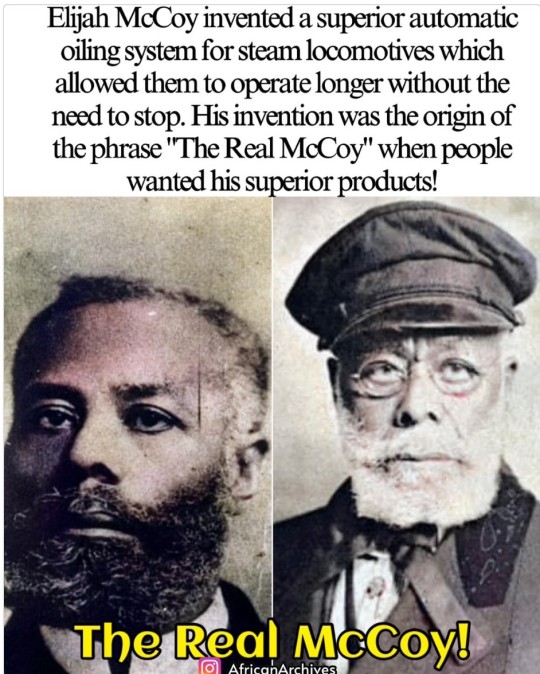
Elijah J. McCoy was born on May 2, 1844, in Colchester, Ontario, Canada, to George and Mildred McCoy.
—They were fugitive slaves who had escaped from Kentucky to Canada via the Underground Railroad. In 1847, the large family returned to the US, settling in Ypsilanti, Michigan.
—Beginning at a young age, Elijah showed a strong interest in mechanics. His parents arranged for him to travel to Scotland at the age of 15 for an apprenticeship in mechanical engineering. He returned home to Michigan after becoming certified as a mechanical engineer.
—Despite his qualifications, he was unable to find work as an engineer in the U.S due to racial barriers;
—He accepted a position as a fireman and oiler for the Michigan Central Railroad. It was in this line of work that he developed his first major inventions. After studying the inefficiencies inherent in the existing system of oiling axles, he invented a lubricating cup that distributed oil evenly over the engine's moving parts. He obtained a patent for this invention, which allowed trains to run continuously for long periods of time without pausing for maintenance.
—McCoy continued to refine his devices, receiving nearly 60 patents over the course of his life. While the majority of his inventions related to lubrication systems, he also developed designs for an ironing board, a lawn sprinkler, and other machines.
—Although McCoy's achievements were recognized in his own time, his name did not appear on the majority of the products that he devised.
—Lacking the capital with which to manufacture his lubricators in large numbers, he typically assigned his patent rights to his employers or sold them to investors. In 1920, toward the end of his life, McCoy formed the Elijah McCoy Manufacturing Company to produce lubricators bearing his name.
—McCoy married Ann Elizabeth Stewart in 1868. She died four years after their marriage. In 1873, McCoy married Mary Eleanor Delaney. In 1922, the McCoys were involved in an automobile accident. Mary died, while Elijah sustained critical injuries from which he never fully recovered.
276 notes
·
View notes
Text
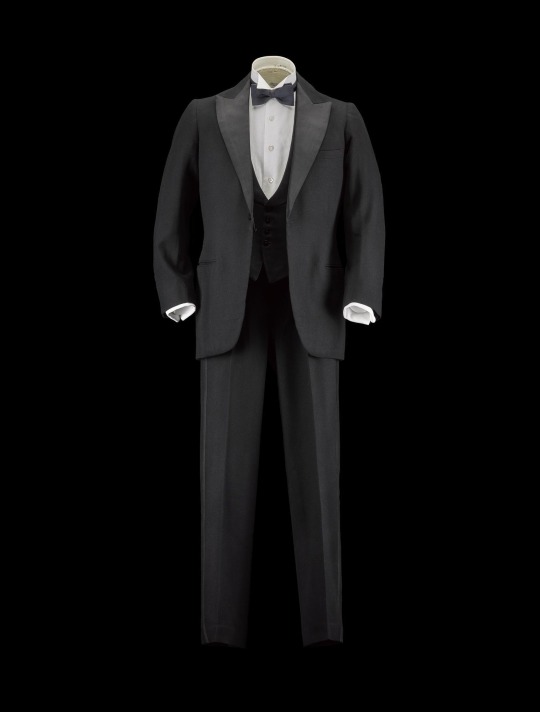
Black Wool Evening Suit, 1920s, Scottish.
By Marshall and Aitken.
National Museums Scotland.
#menswear#black#wool#extant garments#1920s#1920s menswear#1920s suit#1920s evening#evening suit#evening#suit#20th century#Scottish#Scotland#1920s Scotland#1920s britain#Marshall and aitken#national museums scotland
0 notes
Photo

Laig Bay, the Sgùrr of Eigg (walk highlands), Scotland 1920s - by M.E.M. Donaldson (1876 - 1958), Scottish
2K notes
·
View notes
Text
You know, normally I get annoyed when Americans (and it's almost always Americans) mix up Ireland and Scotland. It's more frequent than you think, and annoying every time. We're two related, but distinct cultures.
I bring this up because I fell down a wikipedia rabbit hole today, and discovered a Scottish DC Comics character who apparently served in the 1920s IRA.
Normally, I'd be annoyed by that, but I'm willing to forgive it this time, because it's this guy:

...and that is an amazing mental image.
356 notes
·
View notes
Text

Dorothy Johnstone (British/Scottish, 1892–1980) • Black and Yellow • 1920 • Aberdeen Art Gallery & Museums, Aberdeen, Scotland
#art#fine art#painting#art history#dorothy Johnstone#british/Scottish artist#woman artist#woman painter#art nude#oil painting#figurative#paintings of interiors#paintings of domestic interiors#the painted room art blog#art blogs on tumblr#artwork#art appreciation
135 notes
·
View notes
Photo

The future Queen Elizabeth II being carried up the steps of Balmoral Castle in 1927. #balmoral #scotland #snapshots #snapshot #photo #hermajesty #hermajestythequeen #thequeen #queenelizabeth #royal #royalfamily #uk #unitedkingdom #1920s https://www.instagram.com/p/CiRQ_tpoikC/?igshid=NGJjMDIxMWI=
#balmoral#scotland#snapshots#snapshot#photo#hermajesty#hermajestythequeen#thequeen#queenelizabeth#royal#royalfamily#uk#unitedkingdom#1920s
0 notes